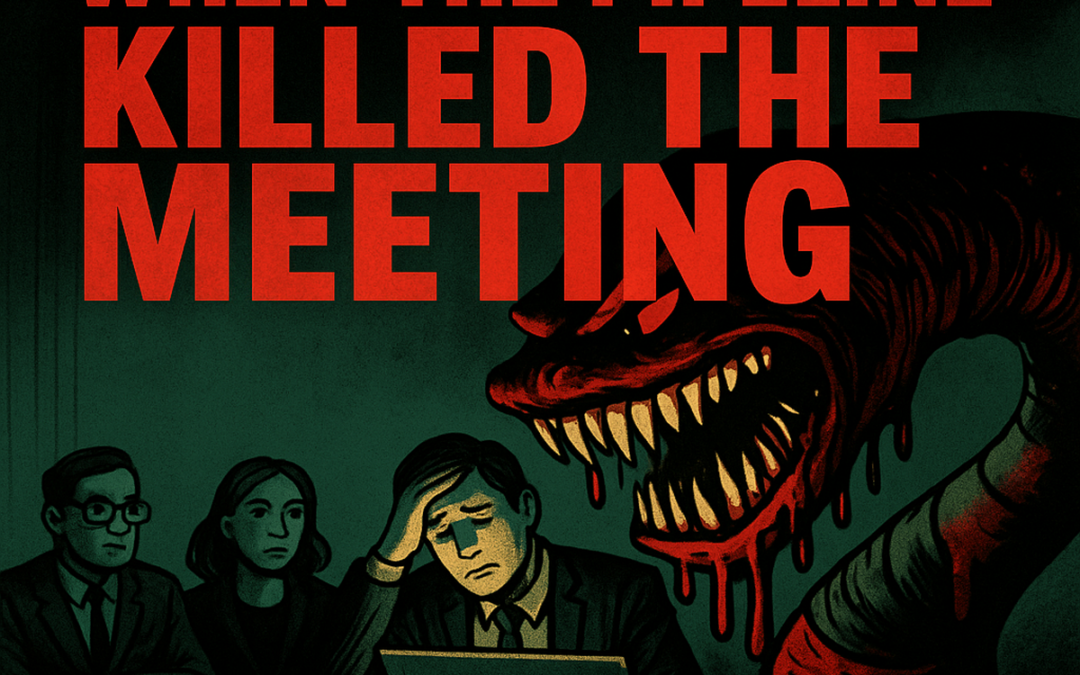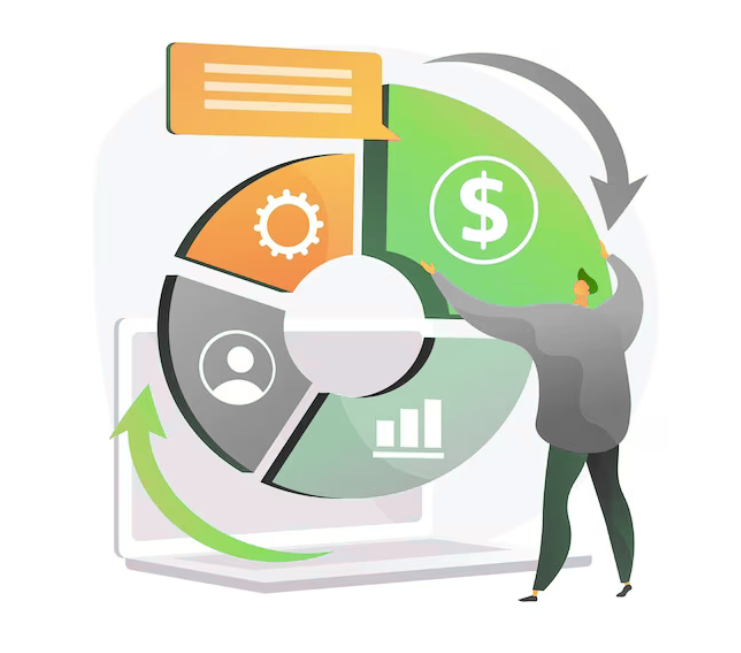
by Bill Poole | Jun 18, 2025 | Sales, Strategy
Note: This is a story built from real patterns we see all the time in entrepreneurial, service-based businesses. Sales leaders are under pressure, coaching is inconsistent, and referrals aren’t producing like they should. The good news? The technology now exists to solve these problems — and do it in a practical, people-first way.
When Taylor, the Integrator at a 25-person B2B services firm, sat down for their Q1 Clarity Break, one problem kept swirling: the sales team wasn’t scaling with the rest of the company.
They had grown steadily over the past two years — strong operations, reliable delivery, and a few rockstar client wins had moved the business forward. But sales? It was messy. Coaching happened here and there, but not predictably. New reps weren’t ramping quickly. And their best rainmaker seemed to be running on instinct more than process.
Taylor didn’t want to throw more headcount at the problem. That wasn’t how they thought. They needed leverage — and they found it in an unexpected place: AI-powered sales coaching.
The Real Problem: Sales Coaching Without Structure
Taylor’s sales leader, Jordan, was experienced and driven. But even Jordan admitted their approach was reactive:
“I’m spending more time trying to figure out what happened in deals than actually helping reps close the next one.”
Reps were sent to occasional trainings, and call shadowing happened “when possible.” But with no clear view into how reps were selling, most coaching was gut feel — not system-driven.
And it wasn’t just coaching that lacked structure. Jordan had also recently rolled out a referral initiative — encouraging reps to “work their networks” and “ask for introductions.” The effort had good intent but lacked focus. The result? Too many reps chasing too many weak connectors.
They needed something better — a way to develop salespeople intentionally and build high-value referral pipelines with purpose.
AI Turns Every Sales Interaction into Coaching Fuel
That’s when Taylor and Jordan decided to pilot a few lightweight AI tools. Nothing crazy — just tools that could help them see what was actually happening.
They implemented software that:
-
Automatically recorded, transcribed, and summarized sales calls and Zoom meetings
-
Analyzed email and CRM activity for engagement patterns
-
Flagged talk-time imbalances, missed opportunities, and stalled follow-ups
-
Connected the dots between rep behavior and results
Instead of relying on rep recollection or Jordan’s memory, they now had a living, breathing coaching dashboard.
And reps loved it too — because the feedback wasn’t generic. It was based on their real conversations. They could listen to their own calls, get suggestions, and adjust — fast.
Coaching Got Better. So Did Referrals.
This shift in visibility didn’t just improve deal flow — it brought clarity to their referral system.
Jordan had introduced a Strategic Connector strategy earlier in the year, encouraging each rep to focus on 5–7 well-positioned people who could refer high-fit clients.
But without data, it had been hard to tell who was really engaging.
Now, with AI analyzing the full spectrum of rep activity — calls, emails, meetings, CRM notes — they could see:
-
Which connectors opened or ignored emails
-
How often they were mentioned in rep activity
-
Whether those relationships were moving or stalling
It turned connector engagement into something measurable and coachable, not just hopeful and anecdotal. Reps started tracking their connector activity alongside pipeline activity. Jordan added it to their sales scorecard. Referrals increased — and became more intentional.
One Sales Leader. A Leaner Team. Better Results.
Jordan felt more effective as a coach. They weren’t just reacting to problems — they were leading. Their one-on-ones became more focused. Their team became more confident. And Taylor finally felt that sales was scaling with the business.
They didn’t need to hire three more reps. They just needed to give their current team better tools and better coaching — and focus their time on the relationships that actually matter.
Ready to See How Your Referral System Stacks Up?
If your team is still trying to generate referrals without a focused strategy, you’re leaving opportunity on the table. We’ve created a Referral System Self-Assessment to help sales leaders and business owners evaluate how well their current system supports consistent, high-quality referrals.
It only takes a few minutes, and you’ll get a personalized score — plus insights on what to improve.
Take the Referral System Self-Assessment Now
Final Thought: The Sales Advantage Is Now Available to Everyone
The takeaway is simple:
You don’t need more salespeople. You don’t need more managers. You need a better system to develop the team you have — and to prioritize the connectors who move the needle.
The tools now exist to do that. They’re accessible, practical, and powerful.
And while not many are doing this yet, the ones who are?
They’re creating a clear sales advantage — and winning on purpose.

by Bill Poole | Jun 4, 2025 | Sales
Is Your Referral System Random or Intentional?
Referrals are a HUGE source of sales for B2B services businesses that provide high-trust services – and have been for a very long time. Here are some powerful stats to back that up:
-
84% of B2B sales start with a referral – Harvard Business Review
-
65% of new business opportunities come from referrals – Firework
-
78% of marketers say referral programs generate good or excellent leads – DemandSage
If you want some numbers that hit home even more, do the math on your own business. Look at the last 3 years. How much of your business came from referrals?
Most businesses rely heavily on word of mouth but never build a system to support it. Others are going all in on AI with the hope that it will replace the need to develop and maintain relationships with trusted partners.
AI doesn’t directly build trust. It can’t replace the work of nurturing and managing the right relationships. So, what’s the answer?
Let’s look at a couple of scenarios for context. One approach is passive, one is intentional.
The Problem: Most Referral Strategies Are Passive
A few months ago, I sat down with the founder of a successful consulting firm. Let’s call him Dave.
Dave had built a great business. His clients loved him, his team was solid, and his calendar stayed full. When I asked him where most of his clients came from, he smiled and said, “Referrals, mostly. We’ve been lucky.”
But when I pressed a little further – Who are your best referral sources? How often do you connect with them? What do you do to help them send you more of the right kind of leads? – the smile faded.
He shrugged.
“We don’t really have a system. It just kind of happens. People know us. They send folks our way.”
Here’s the truth: Dave’s situation is incredibly common. He’s not doing anything wrong – but he’s also not doing anything intentional.
Referrals are his biggest source of new business, yet he treats them like a side effect instead of a strategy. There’s no plan, no process, and no consistent effort to grow or optimize what’s already working.
And that’s the problem.
The Shift: From Passive to Intentional
Now, let me tell you about another business owner – Sarah.
Sarah runs a boutique HR consultancy. Like Dave, she built her business on reputation and relationships. Referrals came in steadily, but it felt unpredictable. Even worse, many of the referred clients weren’t quite right – they needed different services, or they weren’t a great cultural fit.
That changed when Sarah decided to take a more intentional approach.
She started by getting crystal clear on her Ideal Client Profile – not just the industry, but values, mindset, and readiness to engage. Then she mapped out a list of Strategic Connectors – professionals who already served her ideal clients and shared her high-trust, client-first mindset.
Instead of waiting, she reached out. She didn’t pitch – she added value. She shared insights, offered introductions, and created resources her connectors could easily pass along. She made it easy for her connectors to refer her with ready-to-go language and short emails they could forward.
But Sarah didn’t stop there. She also started using AI to make her referral strategy more effective and efficient. With the help of AI tools, she:
-
Identified untapped potential connectors from her CRM and LinkedIn network.
- Validated what truly matters to her ideal clients.
-
Drafted templates for customized follow-up messages and thank you notes.
-
Tracked referral activity and surfaced patterns she hadn’t noticed before.
The result?
Her referral volume increased, but even more importantly, the quality of the clients improved dramatically. Her sales process became smoother, her team stayed in their zone of genius, and her business grew more predictably – all because she stopped treating referrals like luck and started treating them like strategy.
Want to Know Where You Stand?
If referrals are a key part of your business – but your system is mostly based on hope and habit – it might be time for a self-check.
We’ve created a quick Referral System Self-Assessment to help you evaluate how intentional and effective your current approach really is. It only takes a few minutes, and it might just show you what’s missing.
Take the Self-Assessment Now!
Final Thought
If 65% of your business is coming from referrals, but you’re only putting 5% of your energy into generating them, that’s a disconnect.
You already have the relationships. You already do great work. Now it’s time to put a system in place that helps your network help you – consistently, efficiently, and with the right clients.

by Bill Poole | May 22, 2025 | Sales
The Story
John, the founder of a land asset services company, had built something truly special.
His business held a unique position in the market, combining software and services to help clients manage land assets more effectively. With a 95% client retention rate and a well-structured local and offshore team backed by an AI-enabled delivery model, everything pointed to a business ready to scale.
When John decided to explore outside funding to fuel this next stage of growth, he was optimistic. He met with a group of potential investors, and the meeting started strong. They were clearly impressed with the company’s value proposition, traction, and team.
Then came a question that changed the tone in the room:
“What is the value of your sales pipeline?”
John hadn’t prepared for that one.
He opened his CRM, hoping it would speak for itself. But as the screen loaded, the mood shifted. The data was stale. The deal stages were vague and inconsistent. Some opportunities hadn’t been touched in weeks. Forecasts didn’t inspire confidence – they looked more like guesses than projections.
John tried to explain. He scrolled. He fumbled. And while he managed to get through the meeting, he could feel it – something important had been lost in the eyes of the investors, and the moment had passed.
Your Pipeline Sends a Signal
Like John, many entrepreneurial business owners focus so much on delivering excellent service that the sales engine falls behind. But here’s the truth: your pipeline is one of the most important indicators of your business’s value, especially to potential investors, buyers, or partners.
A healthy, well-structured pipeline shows that:
- You know who your ideal client is.
-
You’re engaging with them consistently.
-
Your team is aligned around a repeatable process.
-
Your growth isn’t just aspirational – it’s operationalized.
If your pipeline doesn’t reflect this, it’s not just a missed opportunity. It may be actively reducing the perceived value of your business.
The Good News: It’s Fixable
After the investor meeting, John worked with our team at Convergo to ensure this didn’t happen again.
Working together, they created a clear growth strategy, and the first step was to optimize the current pipeline.
They focused on:
-
Updating and clarifying deal stages
-
Establishing prospect-verifiable milestones
-
Cleaning up data to reflect active, real opportunities
-
Creating a system for regular pipeline reviews
The result? John now has a pipeline that tells the right story to investors. More importantly, it helps his team focus on the right activities to generate consistent, high-quality growth.
How a Messy Pipeline Shows Up in Real Life
The pipeline affects the value of your business, but there are also many other ways that a messy pipeline might affect your team. Here are 8 signs that your pipeline might be quietly hurting you, too:
1. Inconsistent Revenue and Cash Flow
One month’s great, the next is a desert. You can’t confidently plan hiring, marketing, or delivery because you cannot predict your revenue.
2. Leads “Disappear” or Go Cold
You’d be shocked to know how many potential deals go untouched for weeks. Without a follow-up system, you’re basically ghosting opportunities.
3. Wasted Time on Unqualified Leads
Your team’s spending time chasing bad fits – people who were never going to buy. That’s time you don’t get back.
4. Deals Get Stuck in “Maybe”
You’ve got a graveyard of deals sitting in limbo. They aren’t moving forward or out, and no one’s really sure what’s next.
5. Poor Forecasting
You think a strong quarter is coming…until the numbers don’t show up. Your pipeline is bloated with wishful thinking, not real deals.
6. Misaligned Sales and Marketing
Sales says the leads are junk. Marketing says Sales isn’t following up. The truth? Neither side is speaking the same language.
7. Lack of Insight Into What’s Working
You’re making decisions based on gut feelings instead of data. There’s no clarity on what’s actually converting or why.
8. Difficulty Onboarding New Sales Reps
New hires flounder because there’s no clear process. Results vary wildly, and success becomes dependent on whoever’s winging it best.
If any of these signs sound familiar, you’re not alone. But you can fix it.
Take Action! Know What a Tight Pipeline Actually Looks Like
Whether or not you’re planning to engage investors, your pipeline should be an asset, not a liability. It should serve as a growth engine and a reflection of your ability to create predictable revenue.
If you’re unsure what story your pipeline is telling, you’re not the only one – and there’s a simple way to find out.
Click here to see how your current pipeline stacks up and what to do about it:
Download Our Pipeline Optimization Checklist
What Does Your Pipeline Say About Your Business?
Don’t want to go it alone? We’re here to help!
Let’s take a look at your pipeline together.

by Bill Poole | Mar 12, 2025 | Sales
Sales should enable, not prevent, an otherwise successful entrepreneurial business from meeting its revenue goals. Your Sales Scorecard is the litmus test that tells you whether your sales approach hinders or enables your business.
The journey to a mature Sales Scorecard that prompts actions to drive the right business results is just that. A journey! Here are three signs that may help you to shed light on improving your Sales Scorecard:
- You Are Having a Hard Time Predicting Revenue Performance
- Your Scorecard Isn’t Prompting Action in Your Level-10 Meetings
- You Are Taking Actions, But Not Seeing Results
You Are Having a Hard Time Predicting Revenue Performance
I met with a prospect last week that was having a challenging time predicting where her revenue was going to come from in the next quarter. It was important to her to manage cash flow and to apply informed decision-making in scaling up her delivery team.
Not surprising, after some discussion, it was clear that she did not have a reliable sales pipeline to look at when it came to business planning. Each quarter, when it was time to forecast revenue, she was spending the better part of a day calling her sales reps for impromptu pipeline reviews. In those meetings, she was attempting to get a sense of which business might close in the upcoming quarter based on very subjective insights.
If you are having trouble predicting revenue performance, here are a few possible causes:
- Pipeline: You do not have a pipeline with objective criteria and associated Sales Scorecard Metrics to drive predictability.
- Lagging metrics: Your Sales Scorecard is full of lagging metrics. In short, your scorecard is tracking what already happened, not what will happen in the future.
- Sales buy-in: You have an alignment challenge. Your sales team does not understand how their sales activities and metrics affect the progress of the business as a whole. So, they do not buy into the scorecard and are not properly using your CRM.
- Lack of relevance: Your team tracks metrics that don’t necessarily lead to results. An example of this is tracking # of emails or phone calls with no qualifier as to who these emails or phone calls are contacting.
Your Scorecard Isn’t Prompting Action in Your Level-10 Meetings
Your Level 10 gets off to a great start with everyone’s personal and business best. Then it is time for the Data component. You open up your Sales Scorecard, read all of the metrics, and then transition to talking about your Rocks.
The good news is that you are ahead of schedule for your meeting! The bad news is that, once again, you missed an opportunity to capture issues or actions from the Sales Scorecard Discussion.
Glossing over taking actions based on your Sales Scorecard in Level-10 Meetings is not a good idea. If this sounds all too familiar, at least one of these things is probably the case:
- Wrong metrics: If you are not tracking the right metrics, taking the right actions is a guessing game. A mature Sales Scorecard takes time to evolve. Ensure you are open to doing what it takes to evolve your scorecard to the point of maturity. Are you ready to start the journey?
- Reps checking a box: Your reps do only what is necessary to meet their goals. For example, if “# of emails” is tracked, then meaningless emails sent to the wrong person count the same as a thoughtful touchpoint providing value to an ideal prospect. If this is the case, you probably have more significant problems, but it is challenging to take the right action if it appears that the work is getting done.
- Lagging metrics: Lagging metrics tell you about the past. Leading and activity metrics tell you about the future, so tracking those will enable you to take the right action to course-correct if need be.
- Goals are unachievable: Tracking the right metrics is a great start, but setting the bar too high on the targets can be a de-motivator. If the metric has been red for 13 weeks, why take action now?
You Are Taking Actions, But Not Seeing Results
Your scorecard looks good with a lot of green and not too much red, and your to-do’s/tasks are completed week after week, but the results just aren’t there. This can be really frustrating!
More than likely, the root causes of these problems point back to:
- No Sales Strategy: A Sales Scorecard measures how the Sales Strategy is working. If there is no Sales Strategy, then you probably sat down to create the metrics on your Sales Scorecard randomly instead of based on a strategy that will enable the Sales team to meet the goals of the business as a whole.
- Holes in your Sales Process: For example, I often see sales organizations that track # of proposals as a metric. This is a miss. If your sales team is tracking # of proposals without any additional qualifier, then a fantastic proposal that helps an ideal prospect with big problems counts the same as a proposal developed for someone that would not be a good fit for your team to serve. If this is the case, the hole in your sales process is that your reps are not qualifying.
Your Sales Scorecard Should Be Fueling Growth—Not Holding You Back
If you’re struggling with unpredictable revenue, a scorecard that isn’t driving action, or sales efforts that don’t translate into results, it’s time to make a change.
Join us on April 9th for our Free Scorecard Masterclass and learn how to build a high-impact sales scorecard that turns data into decisions and drives measurable growth. You’ll gain the insights you need to align your scorecard with your business goals and start seeing real, intentional results.
Spots are limited—register now and take control of your sales growth!
Register Now!

by Bill Poole | Feb 12, 2025 | Sales
Many services-centric businesses skip or overlook the importance of leveraging the Client Journey – or “Proven Process” in EOS® terms – to acquire and serve more Ideal Clients. This is a huge missed opportunity for many reasons.
In this blog, we will look at a case study that shows how focusing on Ideal Clients and the Proven Process are the foundation for a successful Sales Process.
The Context
We worked with a business that provided back-office HR/benefits support for small to mid-sized companies. The company was growing steadily but not on a trajectory to meet its desired growth goals that would eventually allow it to sell the business. So, they needed to take action.
The Challenge
Their Integrator reached out for some help with a Sales Process to accelerate growth. After some initial discovery, we found that the problem was a bit deeper than a sales problem.
Sales, Marketing, and Client Success were at odds with each other. Sales and Marketing were not working together to fill the funnel with Ideal Clients. The Sales team was frustrated, complaining that they were getting ‘garbage’ leads from Marketing. The leads weren’t converting, forcing Sales to rely heavily on referrals instead.
Given that this was their only source of leads, the Sales team could not be picky, and they did whatever it took to close the referrals they received. Unfortunately, they were selling to clients who were not Ideal Clients, which caused friction between the Sales and Client Success teams. The handoff/onboarding process was constantly challenging, client satisfaction was low, and there was a lot of finger-pointing when it came to taking responsibility for unhappy clients.
Despite all of this, the business was still growing annually at 6.7%. However, this was a far cry from the 25% goal on their three-year plan. While frustrating, there was a good opportunity to align the business to get on track to meet its goals.
The Solution
Our client decided to take action. They sought our help to work with the team to align their business to acquire and serve more Ideal Clients. The entire Leadership team was involved in the project and all agreed that the problem was deeper than just a Sales problem.
Here’s what we did:
1. Refined their Ideal Client Profile:
We ensured all were focused on bringing on clients that the Client Success team was optimized to serve. One significant change was that they narrowed the criteria for the size of businesses they were targeting from 2500-5000 employees to 250-1500.
2. Client Journey / Proven Process Mapping:
Together, we mapped the ideal path to value for their Ideal Clients, ensuring a cohesive journey from initial engagement to long-term success.
3. Aligned their Core Processes:
We optimized Marketing, Sales, and Client Success processes to drive the desired path to value for Ideal Clients.
Here is a video that provides context on how the Client Journey / Proven Process mapping adds Context to the Core Processes:

From a Sales perspective, the refined Ideal Client Profile and Proven Process created a strong foundation for a Sales Roadmap designed to:
- Optimize the “Onboarding” process to improve the handoff from Sales to Client Success in order to improve client satisfaction.
- Develop a Quarterly Business Review (QBR) Process to immediately impact retention and increase revenue per client.
- Develop an aligned Sales and Marketing approach to generate more ICP-qualified prospects via referrals and inbound leads.
- Optimize the Sales Process to align with the newly developed Proven Process to win a higher % of ICP-qualified opportunities.
The Result
The immediate impact on the team was tremendous. They were all much more understanding and sensitive to the challenges faced by other team members and their departments. The disagreements and finger-pointing ended. Everyone was focused and aligned on targeting ideal prospects, bringing on the right clients, and ensuring the clients were positioned to realize maximum value from the Client Success team.
The newly aligned business had a freshly optimized Ideal Client Profile and a Proven process that provided a path to value to be used by the entire organization for internal alignment and client communications. They also got what they were initially looking for – an optimized Sales Process. By putting these pieces into action, the team was then able to create the internal processes to deliver a great experience:
- Marketing and Sales were aligned around a process to generate leads and referrals.
- Sales now had a Sales Process.
- Sales and Client Success worked together on an Onboarding Process to ensure clients were set up for long-term success.
- The Client Success team also had additional context to improve client satisfaction.
All in all, everyone – including prospects and clients – were on the right path. The project was so successful that the company was sold a year later, well before the vision.
Final Thoughts
This story is all too common. Small businesses naturally grow into misaligned, inward-facing, departmental silos. If this is your challenge, we’d love to talk with you to see if we can help you too!

by Bill Poole | Jan 29, 2025 | Resources, Sales, Strategy
Setting sales goals is extremely important for entrepreneurial businesses. Do it right, and your entire sales team is bought into their role in delivering the needed revenue to meet the business’s goals. Do it wrong, and your goals are meaningless. Your sales team is deflated and not bought into their role in supporting the goals of the business.
Vital as it is, many teams struggle with doing this effectively. There are two high-level approaches to setting Sales Scorecard goals:
Throughout my years in sales, I’ve experienced both methods firsthand—each with its own advantages and pitfalls. In this blog, I’ll share stories from my career that illustrate the realities of both approaches. These insights can help you set your Sales Scorecard goals for 2025 with confidence.
A Story About the Top-Down Approach
I was on a sales team with seven total reps that took the top-down approach to setting Sales Scorecard goals. It started with the CFO casting a 30% YOY growth goal. Why 30%? Because that’s the growth they wanted. I call this the “spaghetti-on-the-wall” approach.
Sure, 30% growth would be nice, but the goal was based on a dream, not a plan. It had nothing to do with past performance or plans to invest in enabling that growth—it was just left to the sales reps to figure it out or work harder!
There were some advantages to this approach:
- The math was simple! Last year’s revenue x 130%, divided by 7. That sure didn’t take very long.
- The sales goals (not the people) were aligned with the business’s goals.
As you might imagine, the disadvantages in this case outweighed the advantages:
- We were not engaged in the process, so we weren’t bought into the numbers as a sales team.
- These numbers were unrealistic. We were given a significant increase in our Sales Scorecard goals without being given anything to drive the increase (new products, sales tools, more reps, etc.). Maybe they thought we would work 30% more?
- We didn’t feel like it was fair. The revenue goal was divided by seven without considering territories, skill levels, or other variables.
The result? By May, no one was on track to reach their goals. As a result, goal attainment—and the associated bonuses—were no longer a motivator. We were all focused on how we could make enough money to meet our own personal goals, and we lost visibility of the business goals, which of course fell short.
A Story About the Bottom-Up Approach
In a previous life, I was wearing a marketing hat at a technology company and learned about their bottom-up approach to setting annual Sales Scorecard goals.
The goal-setting process required gathering a lot of input from individual sales team contributors. It also took into account the macroeconomic environment, market conditions, the historical performance of the company and individual territories, and resource availability.
All these factors were considered when developing the first round of Sales Scorecard goals. Then, the company revenue goals were taken into account, resulting in an upward adjustment of the original goals.
There were some advantages to this approach:
- The sales team felt involved in setting the goals.
- Incorporating historical context into the goal-setting process ultimately made the goals more realistic and achievable than in the top-down scenario.
There were also some disadvantages to this approach:
- This was a very time-consuming process, and the goals were not communicated to reps until mid-February.
- The lack of involvement from senior leadership in the initial part of the process was risky. Though the goals seemed achievable, they could have hindered the company’s performance.
- While the process was collaborative, uplifting the goals affected the team’s buy-in of the final goals.
The result? In this case, there was buy-in, and the sales team was invested in pursuing their goals and associated bonuses throughout the year. In the end, the company fell just short of its revenue goals.
Here is a comparison of the two approaches:
| Aspect |
Top-Down |
Bottom-Up |
| Goal Ownership |
Limited for sales reps |
Strong ownership from sales teams |
| Speed of Process |
Quick and efficient |
Slower and more collaborative |
| Realism |
May overlook ground realities |
Grounded in field-level insights |
| Strategic Alignment |
Fully aligned with company vision |
May require adjustments to align |
The Answer is Somewhere in the Middle
It’s clear that neither approach is perfect, so what’s the best solution?
Instead of choosing top-down or bottom-up, the answer lies somewhere in the middle. Business goals need to be factored in, reps need to be involved, and historical data and market realities must be considered.
The keys to making this work are:
- Top-down alignment: Establish a collaborative culture where everyone is on the same page. This is broader (and more challenging) than setting annual company goals. The spaghetti-on-the-wall scenario is symptomatic of a leadership team not aligned with the rest of the company. Maintaining open and honest communication about company goals on an ongoing basis and valuing the insight of team members should be the foundation of the goal-setting process.
- Informed and action-oriented decision-making: Company leaders set annual goals based on historical data, market trends, and plans to make investments in products, tools, or strategies that will enable the desired growth.
- Sales team involvement: Start by involving the sales team as described in the bottom-up approach.
- Collaboration: Once the goals have been set, let the sales leadership go to work! With everyone on the same page in this collaborative culture, the role of the sales leader is to coach the reps and team to collaborate on a Sales Scorecard that will support the business goals.
This approach balances ambition with practicality, fostering buy-in across the organization while ensuring alignment with the big picture. It may take longer than the top-down approach, but start earlier! The result is that everyone will be aligned and invested in reaching their goals as a team.
Need Help Setting Your Sales Scorecard Goals?
Convergo is rolling out our Sales Scorecard Workshop to help teams get this right. Stay tuned for details, or contact us today to start the conversation!







